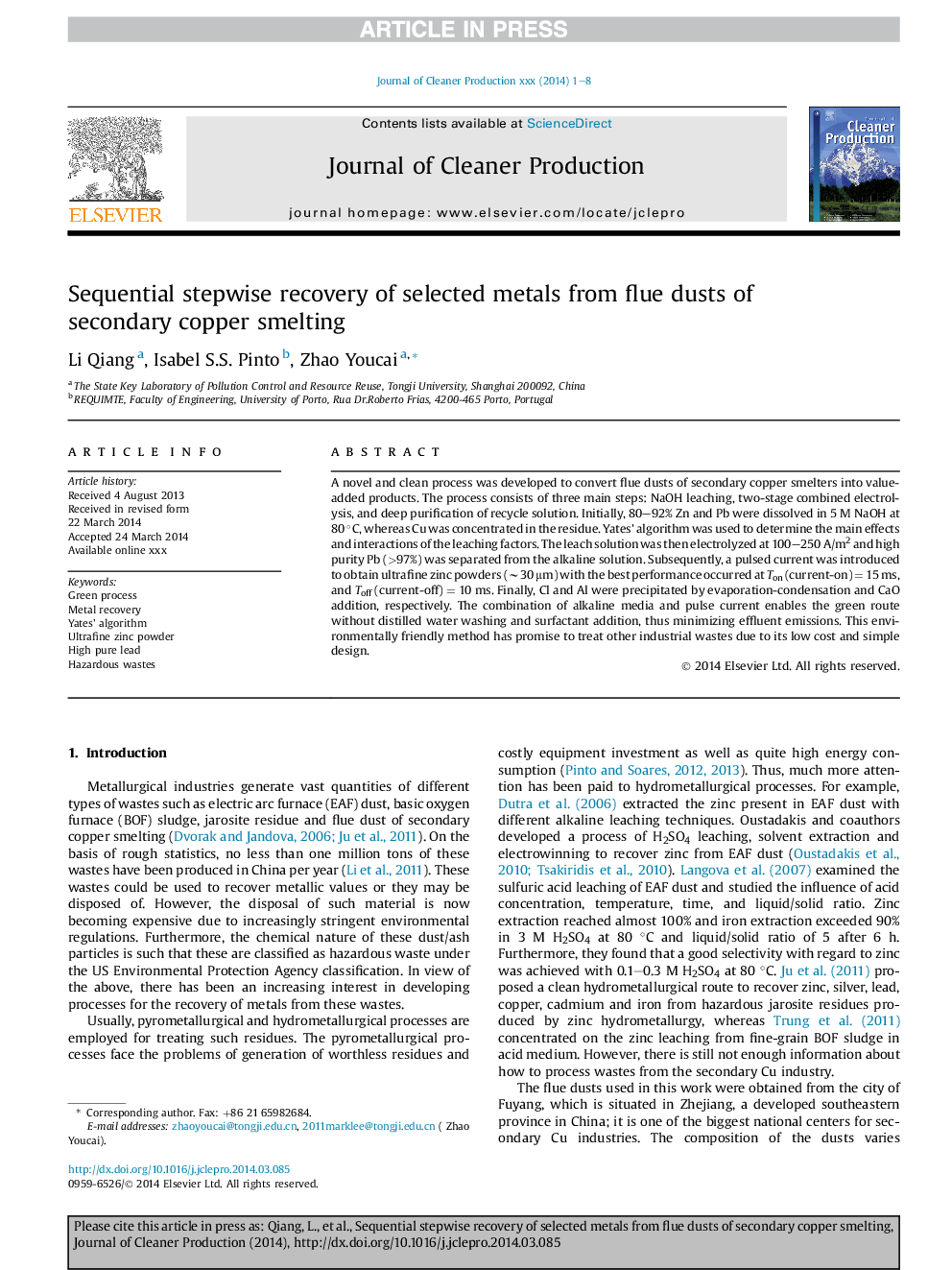| Article ID | Journal | Published Year | Pages | File Type |
|---|---|---|---|---|
| 8105847 | Journal of Cleaner Production | 2014 | 8 Pages |
Abstract
A novel and clean process was developed to convert flue dusts of secondary copper smelters into value-added products. The process consists of three main steps: NaOH leaching, two-stage combined electrolysis, and deep purification of recycle solution. Initially, 80-92% Zn and Pb were dissolved in 5 M NaOH at 80 °C, whereas Cu was concentrated in the residue. Yates' algorithm was used to determine the main effects and interactions of the leaching factors. The leach solution was then electrolyzed at 100-250 A/m2 and high purity Pb (>97%) was separated from the alkaline solution. Subsequently, a pulsed current was introduced to obtain ultrafine zinc powders (â¼30 μm) with the best performance occurred at Ton (current-on) = 15 ms, and Toff (current-off) = 10 ms. Finally, Cl and Al were precipitated by evaporation-condensation and CaO addition, respectively. The combination of alkaline media and pulse current enables the green route without distilled water washing and surfactant addition, thus minimizing effluent emissions. This environmentally friendly method has promise to treat other industrial wastes due to its low cost and simple design.
Related Topics
Physical Sciences and Engineering
Energy
Renewable Energy, Sustainability and the Environment
Authors
Li Qiang, Isabel S.S. Pinto, Zhao Youcai Zhao Youcai,
